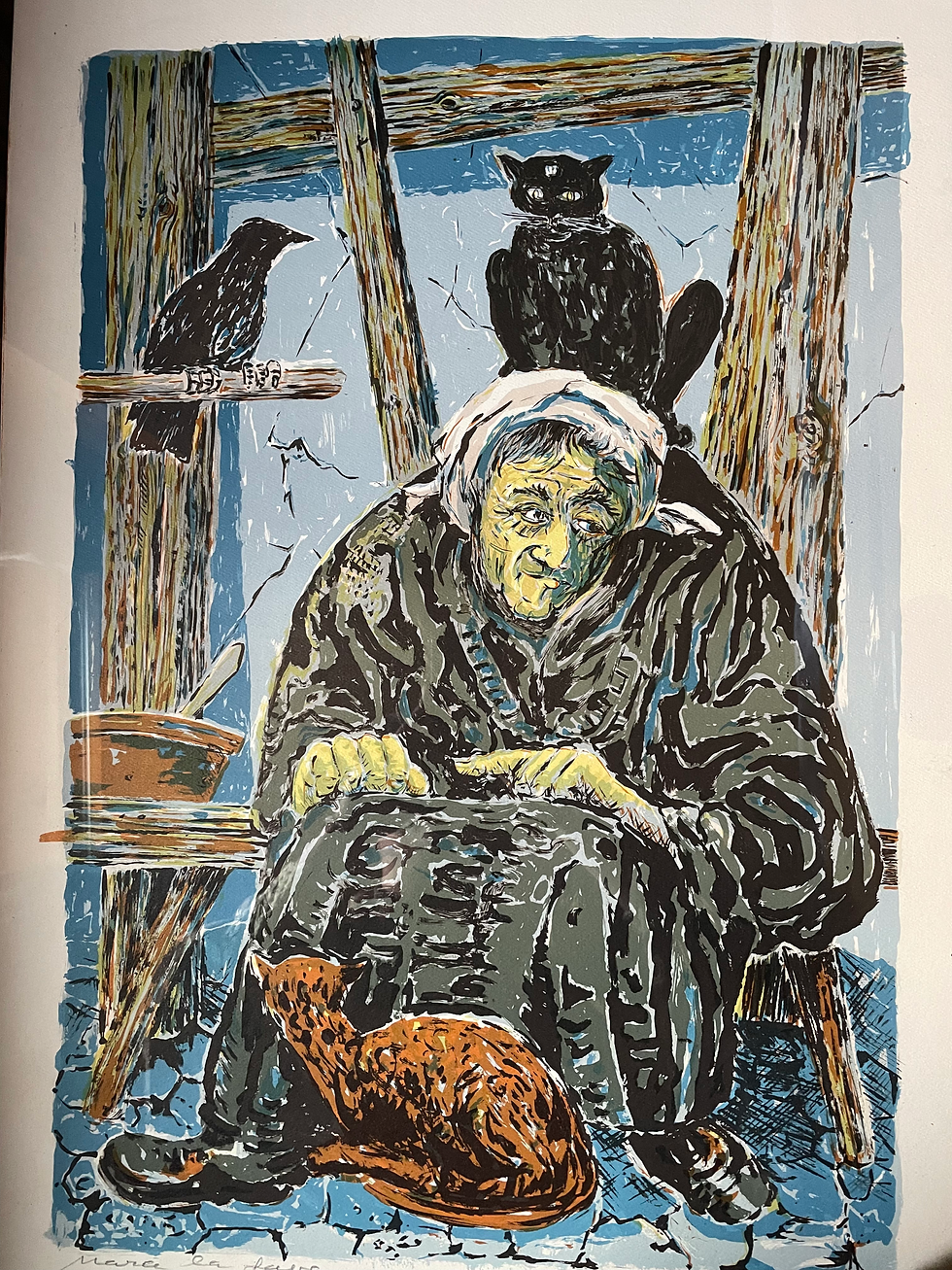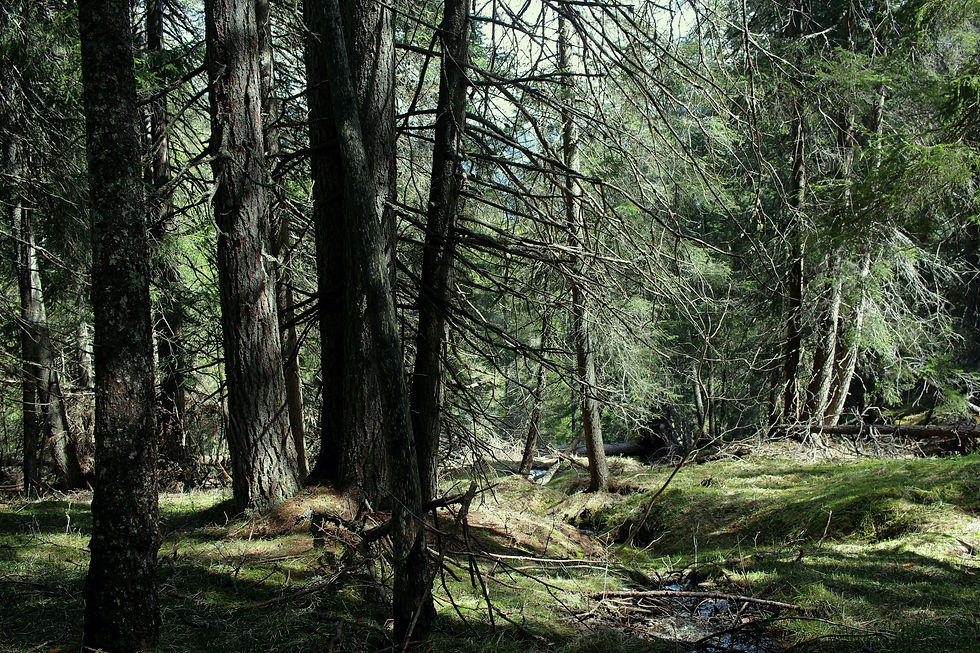witches
- Silvana Candreia

- Nov 1, 2023
- 4 min read
Halloween, All Saints' Day, Samhain. During these days we are celebrating the dead. It's a time of transition and a celebration of the mystical and even the occult as in those nights the witches are out and about. Beware of these evil creatures, our fairy tales warn. But is that even true? Provoked by a podcast, a story about a witch from the village and a self-chosen way of life I'm starting my search for the witch that I would like to see in our stories from now on. A witch like me.

I'm a modern witch like so many women in my life, each of us in her own way. I've always known that. As a child I made potions, tried spells and carved wands. I devoured all the books about magic. But never did I identify with the witch from the fairy tales. This old, wrinkly, hunchbacked woman scared me - which clearly was her only task - and the child that I was couldn't connect the magic that I felt inside of me and my fantasy worlds with the evil power of these women. Besides magic doesn't exist anyway, our society seemed to yell at me, which led me, like many of us, to loose my belief in it for a while. But by returning to nature, by connecting to myself and to the Universe and by learning all my practices over the years, my magical power came back as well.
Our magic is different from the one of the fairy tale witches who are about to do their mischief in these nights. My magic, like the one of my girlfriends, doesn't want anything evil. In our lives magic means that we do certain things with a specific intention, that we connect to our inner selves and to nature. And so I'm to this day making potions by mixing my own elixirs and tinctures that will support me on a physical and emotional level. I use my spells everyday by saying mantras and affirmations and I still create wands that look a bit different than what they used to in my childhood. They might be little gratitude bundles I gift to the river or material collected from nature that my hands form into a mandala whose purpose is to create connection to the land. Often it's only my hands that are like a wand when I put them on a part of my body that is hurting or when I lay them on a tree, a flower, a stone to again: find connection.
But in today's post I don't only want to write about my own practices, but something else wants to be explored. Something that has been knocking on my door ever since I listened to the podcast series "witch" by the BBC: The witch in our society, who still represents a certain image of a woman.
I live in a village where a story about a witch is still being told: the story of the "narra dalla fava", which means "the maniac of the beans". This witch supposedly lived in a cave outside the village and punished all the children that stole beans from people's gardens. The cave really exists. It is located on a steep hillside close to the river by the entrance of the village. And depending on who you ask the energy emanating from that place must be very dark as it seems like the animals grazing the meadows around that cave are having more accidents than on other steep hills.

I grew up with this witch as my dad had a painted image of her hanging in his study for years. The woman in the painting sits hunched over on a stool, her skin is wrinkly, the nose crooked and her whole appearance scary. A cat sits on her head and a raven on a beam above her. She's a witch straight out of a fairy tale and one you don't really want to meet.
But I ask myself: What if that woman really existed? Was this really her story, the story that is still told to this day? Was this woman not rather a welcome scapegoat to scare children away from the dangerous cave and to warn them not to steal? To me it seems too easy to blame a woman who doesn't fit the picture of society's expectations for all the bad things. To me it seems too easy to open the box of the crazy cat lady when a woman is childfree, but living with cats. And to me it seems too easy to mark someone as weird, or as a witch to stay with our example, when they decided for themselves to live slightly differently than the majority of the people. And still I'm taken aback that this image of the witch has persisted for so long in our culture. One might think we have learned something from the witch trials...
I try to view this woman from another angle. What if she isn't even ill-tempered, but just living differently from what is expected of a woman of a certain age? What if she is indeed an older, single woman, but one that is actually happy with her life? A woman that has lived many fulfilled years, enjoyed her freedom and done her thing. And now she's spending her last chapter alone in this village with a cat and a garden. And yes, sometimes a friendly raven comes to visit. She's witty, funny and a little bit cheeky. Perhaps she owns a few chickens like the 90-year old, who lives a few houses away from mine and who lets her animals roam the streets of the village. Although the witch from our new story doesn't appreciate it when her beans get taken without her permission, she's always giving away her vegetables for free to the people walking by, like so many do here in the village. She's generous and always up for a chat.
I could be a woman like that one day. And you know what? This new image pleases me! Let's turn the witch to something positive again, may she become a symbol for an independent, self-reliant, happy woman. So that women like me, women like my girlfriends, can call themselves a witch proudly.
To me, a witch is a woman that is capable of letting her intuition take hold of her actions, that communes with her environment, that isn't afraid of facing challenges.
Paulo Coelho














